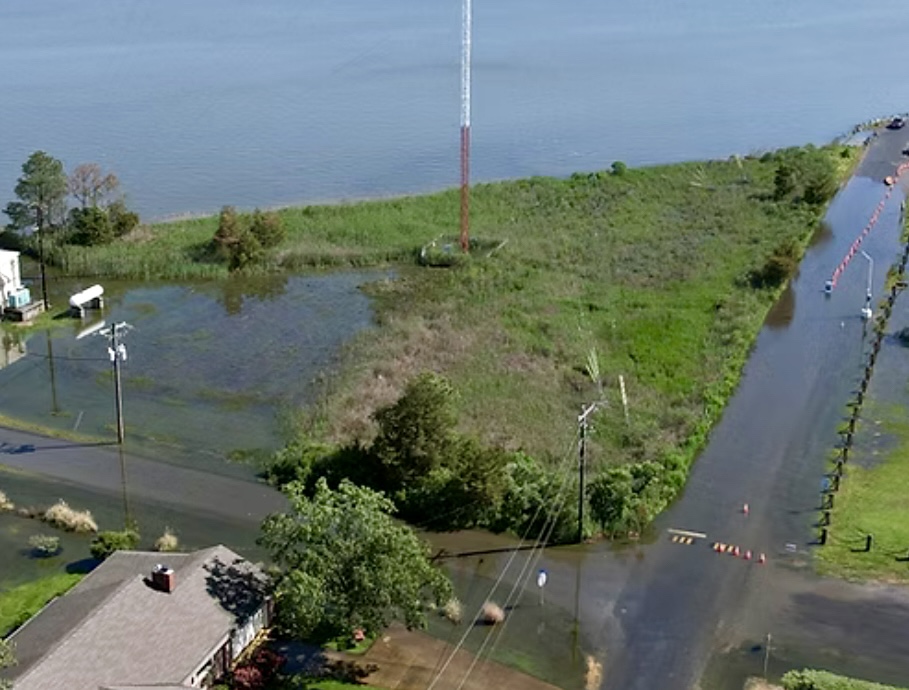Considering its location, the Richardson Maritime Museum can’t help but be a centerpiece of a new Cambridge waterfront.
The four grassy acres of museum property take up more than 13 percent of the area planned for development, and the vintage vessels that populate it and countless nautical artifacts are self-evidently the anchor for the project’s Maritime Trade Zone and Western Gateway.
Directly abutting the proposed boutique hotel and rejuvenated 1,000-foot fishing pier, plans are for a revitalized museum to complement the projected commercial and residential infrastructure and recreational green spaces, capturing a critical element of the city’s identity under the plan.
Museum board chairman Debbie Usab says she appreciates the good fortune of being situated so strategically, and is working hard to ensure it can secure grant funding and philanthropic donations to fund upgrades that ensure it lives up to its tremendous potential.

Board Chair Debbie Usab is preparing the Richardson Maritime Museum to be a key element of the waterfront.
“As a key component to the waterfront development, the museum has a great opportunity to serve as a visual representation of Dorchester County’s maritime heritage,” she said. “We’ve increased our productivity, expanding the museum’s volunteer base, fundraising, staging events, and becoming a more visible component of Dorchester life.”
The city’s rich maritime heritage gives the museum plenty to work with. The exhibit building, now under renovation, will showcase its trove of Chesapeake Bay ship models, watermen’s artifacts, and vintage boatbuilding tools like adzes, caulking mallets, and navigational gear, all highlighting centuries of local craftsmanship.
Carrying on the legacy of namesake Captain James B. Richardson, known as “Mr. Jim,” the museum encourages hands-on learning for adults and children alike, such as the “Build-a-Boat” classes that ran through the summer on Wednesday evenings.
Plans are also in process to create a Richardson Maritime Heritage Center, which promises not only to preserve the Eastern Shore’s seafaring legacy, but also to engage the community more directly. Featuring classrooms and community rooms where students and visitors can learn traditional boatbuilding techniques and maritime history, and provide scholars access to archives and oral histories that document the region’s nautical traditions, Usab said.
A refurbished Ruark Boatworks, a working shop, will provide visitors the chance to watch volunteer artisans and master boatwrights restoring and crafting traditional vessels in real time.
But the museum’s potential crown jewel – and wild card – is the USS Sequoia, the 104-foot yacht that hosted floating diplomacy for presidents from Hoover to Ford. The venerable ship’s dilapidated hull has has peeked out from under a huge tarpaulin since 2013.
Owner Michael Cantor has said he wants the boat to be restored and maintained in Cambridge, but it may return to its original Washington, DC, waters. Still, the five-year project could create 30 local jobs and attract tourists to the museum and the waterfront.
In July, another old friend of the boatworks, the historic skipjack Peregrine was welcomed back to the museum, where it was built in 1972, for restoration and permanent exhibition.
The museum’s history has not been without some bumpy roads. In financial straits, the museum sold the property to CWDI in February 2023, which in turn leased it back for a nominal fee to ensure the museum would continue to play a role in the harbor development.
At the time, CWDI’s former executive director Matt Leonard called the agreement “more than just a land deal,” but rather “a way of aligning [our respective] missions to the benefit of both.”
A lifeline for the museum, to be sure, but Usab says she hopes the arrangement will be temporary, and the museum will again be solvent and self-sustaining one day.
“We are working on potential partners and funders to re-purchase the property,” she said. “It would be a huge benefit to the community, as well as our heritage.”








